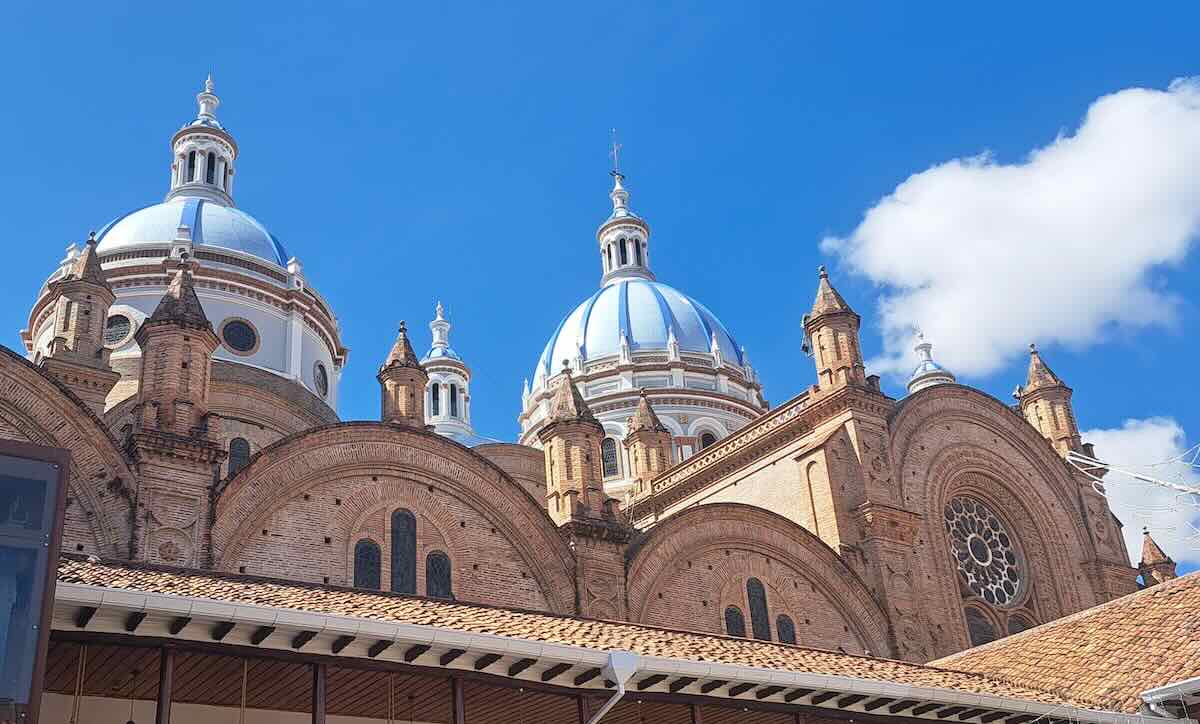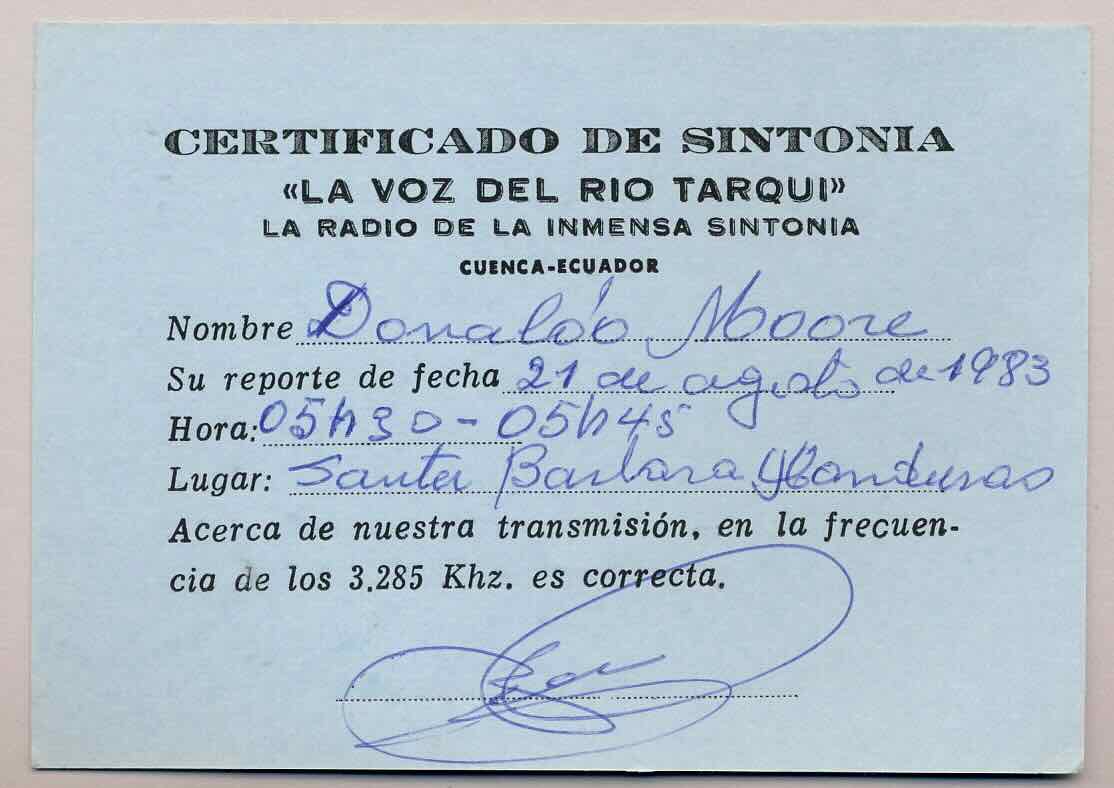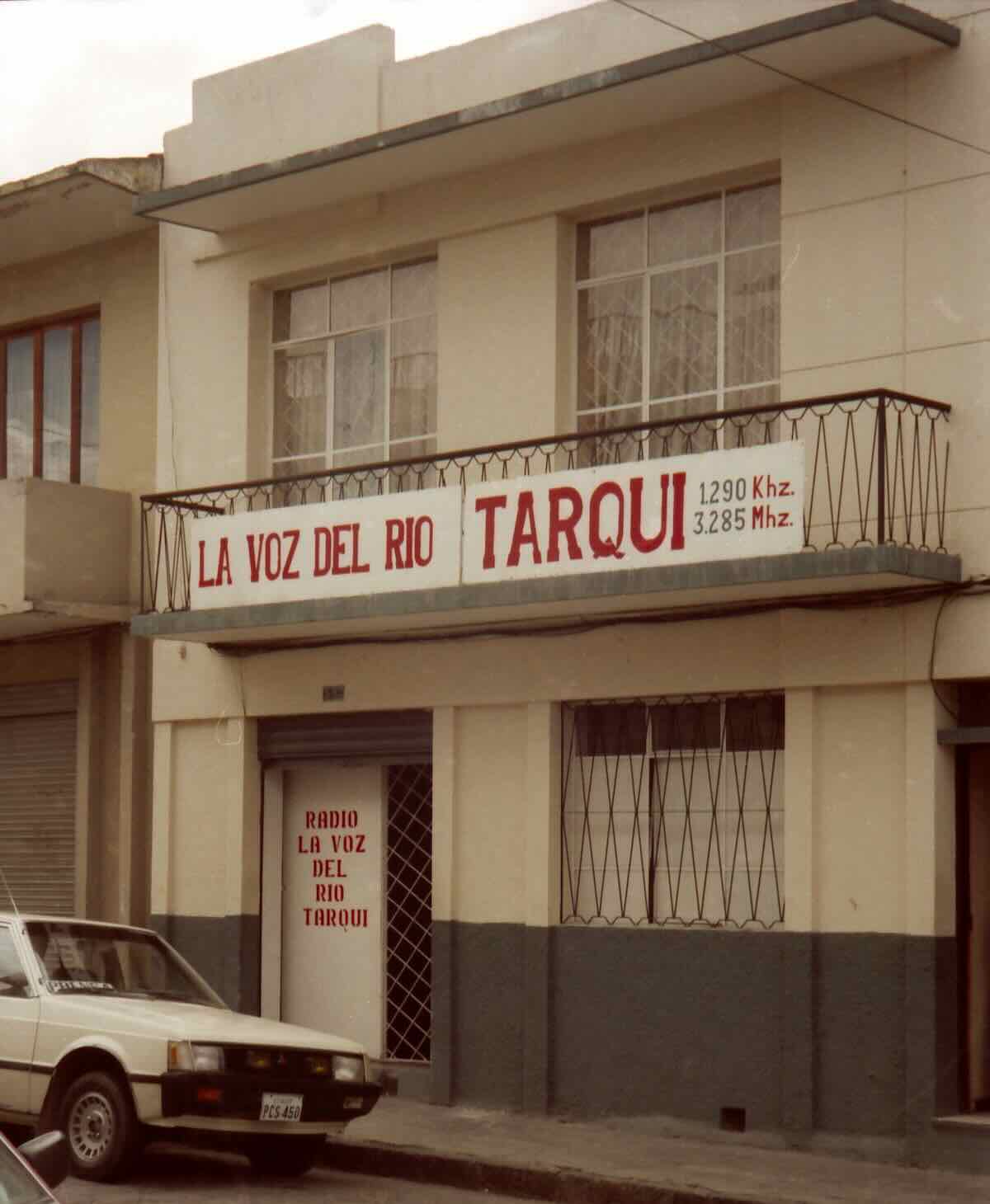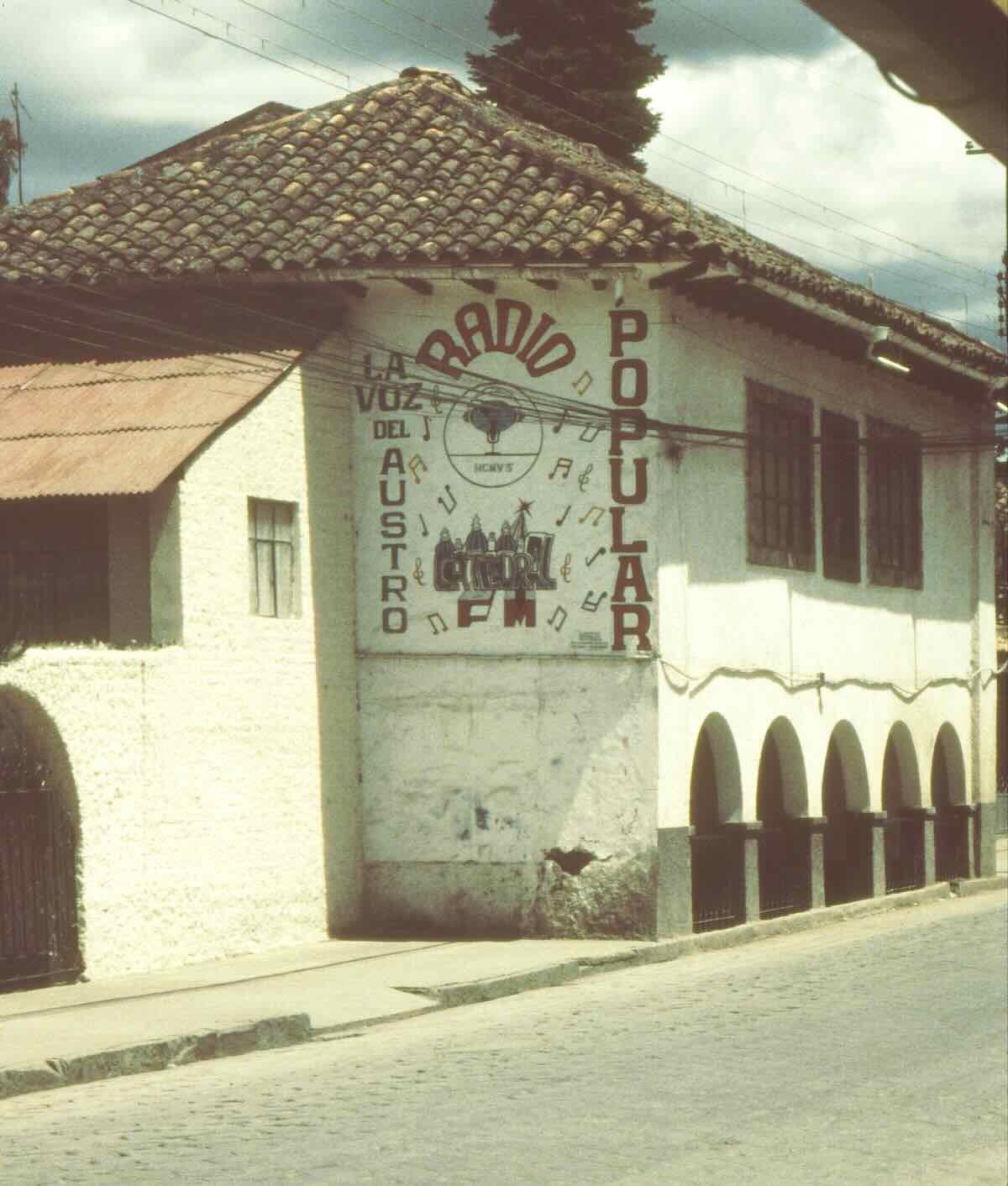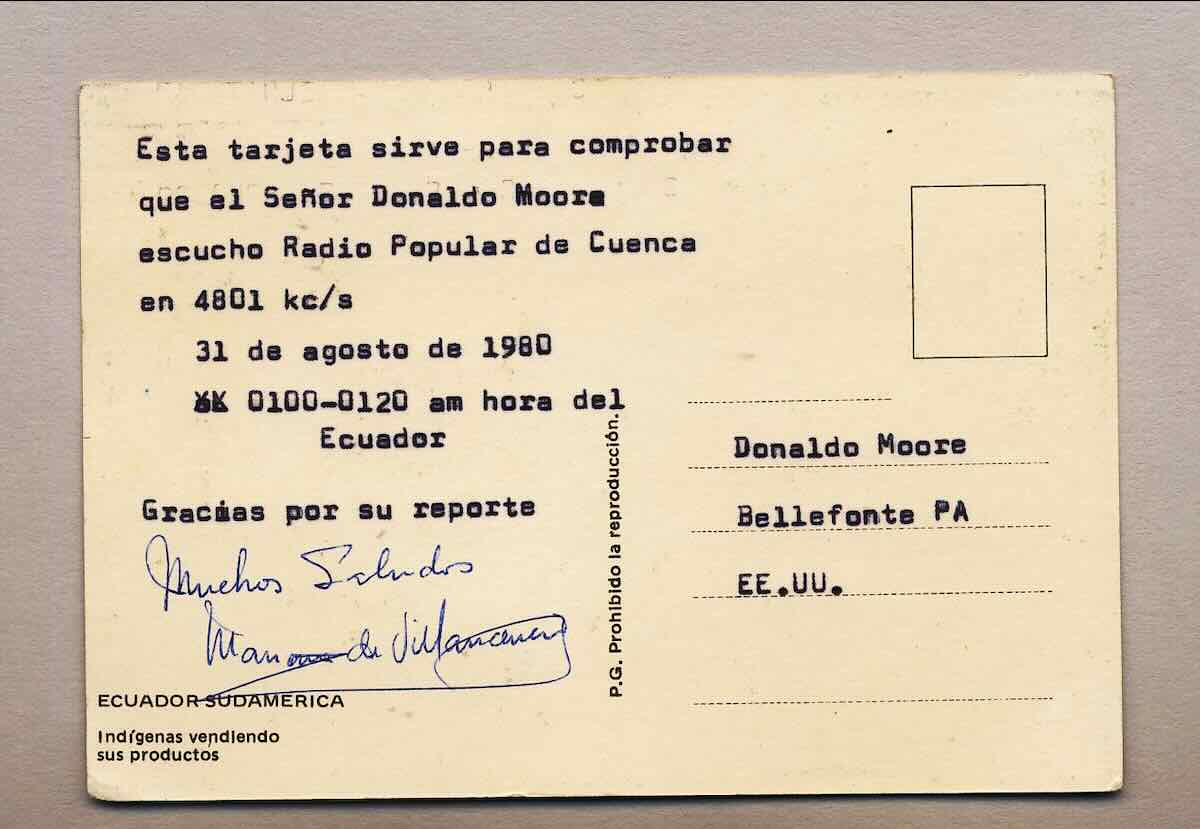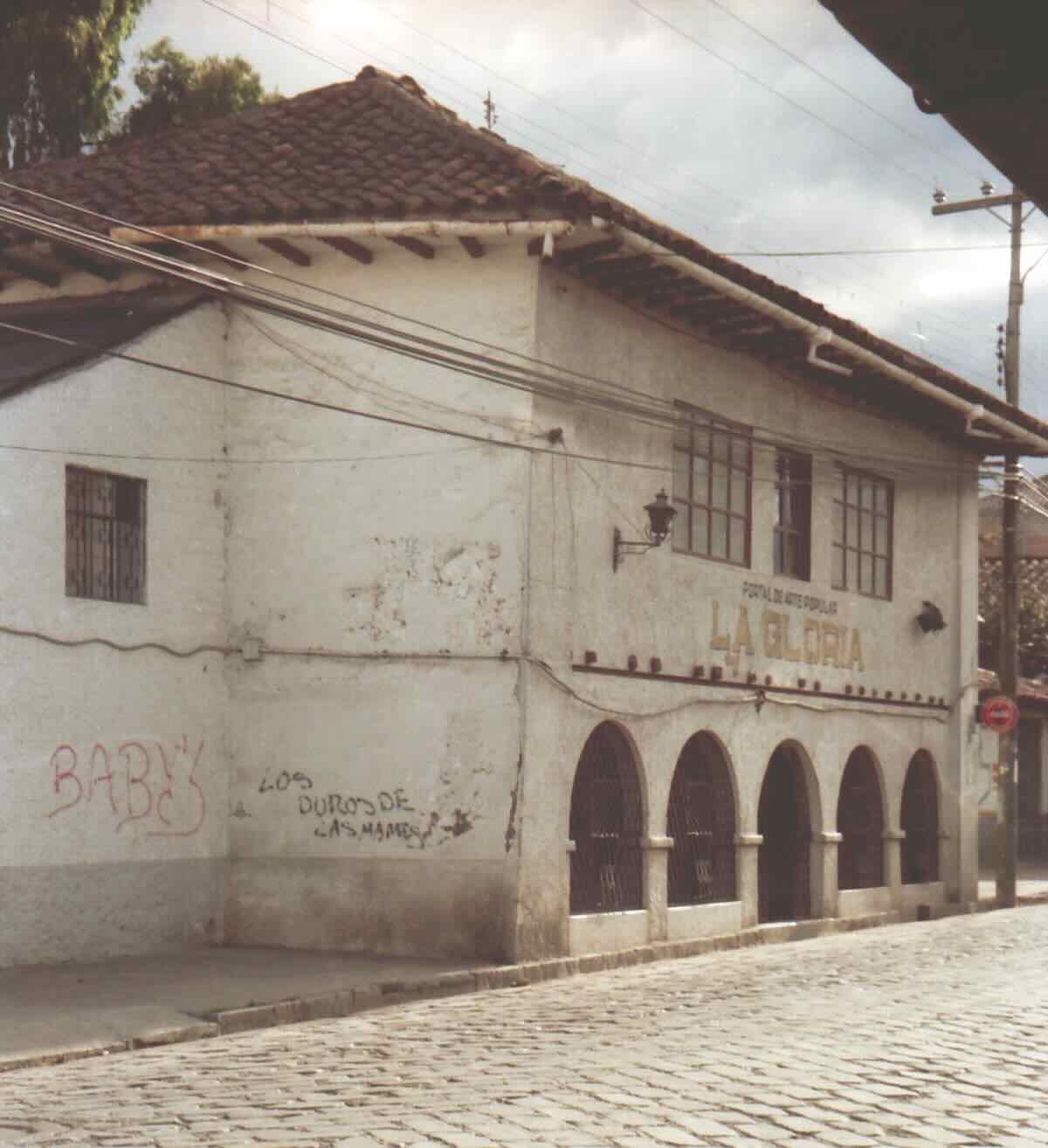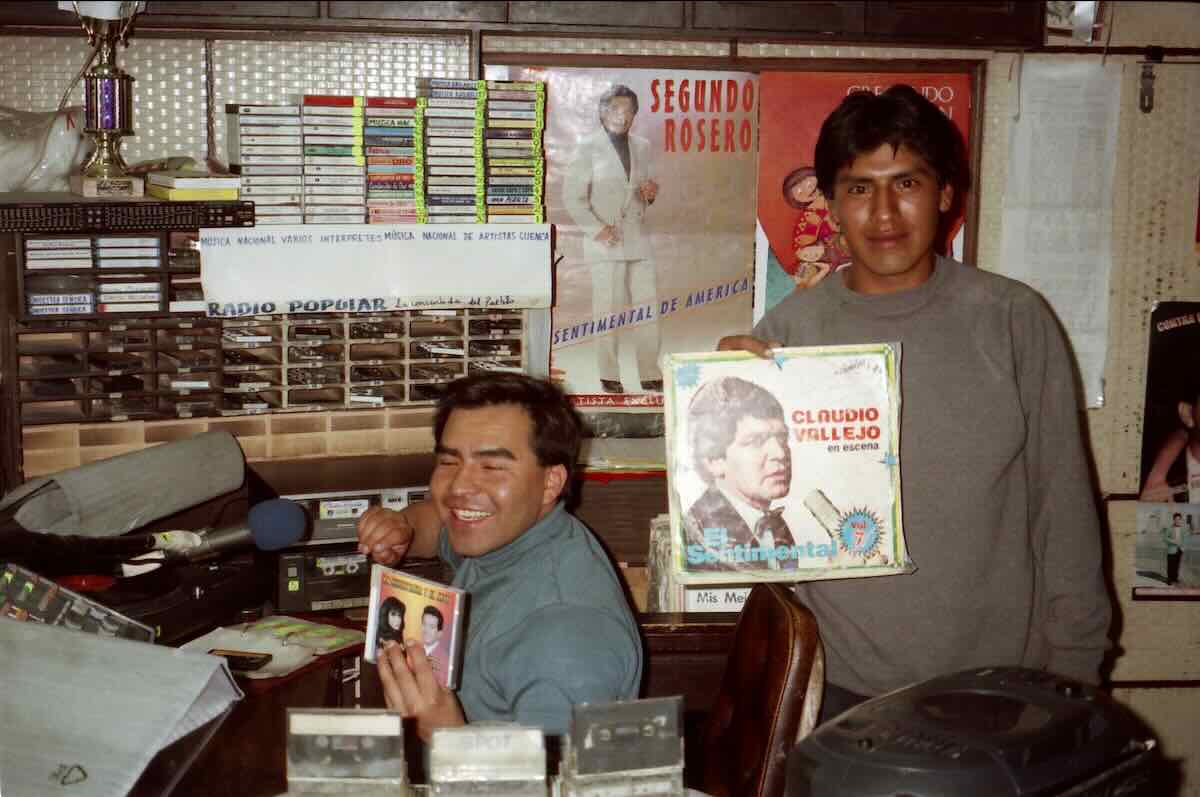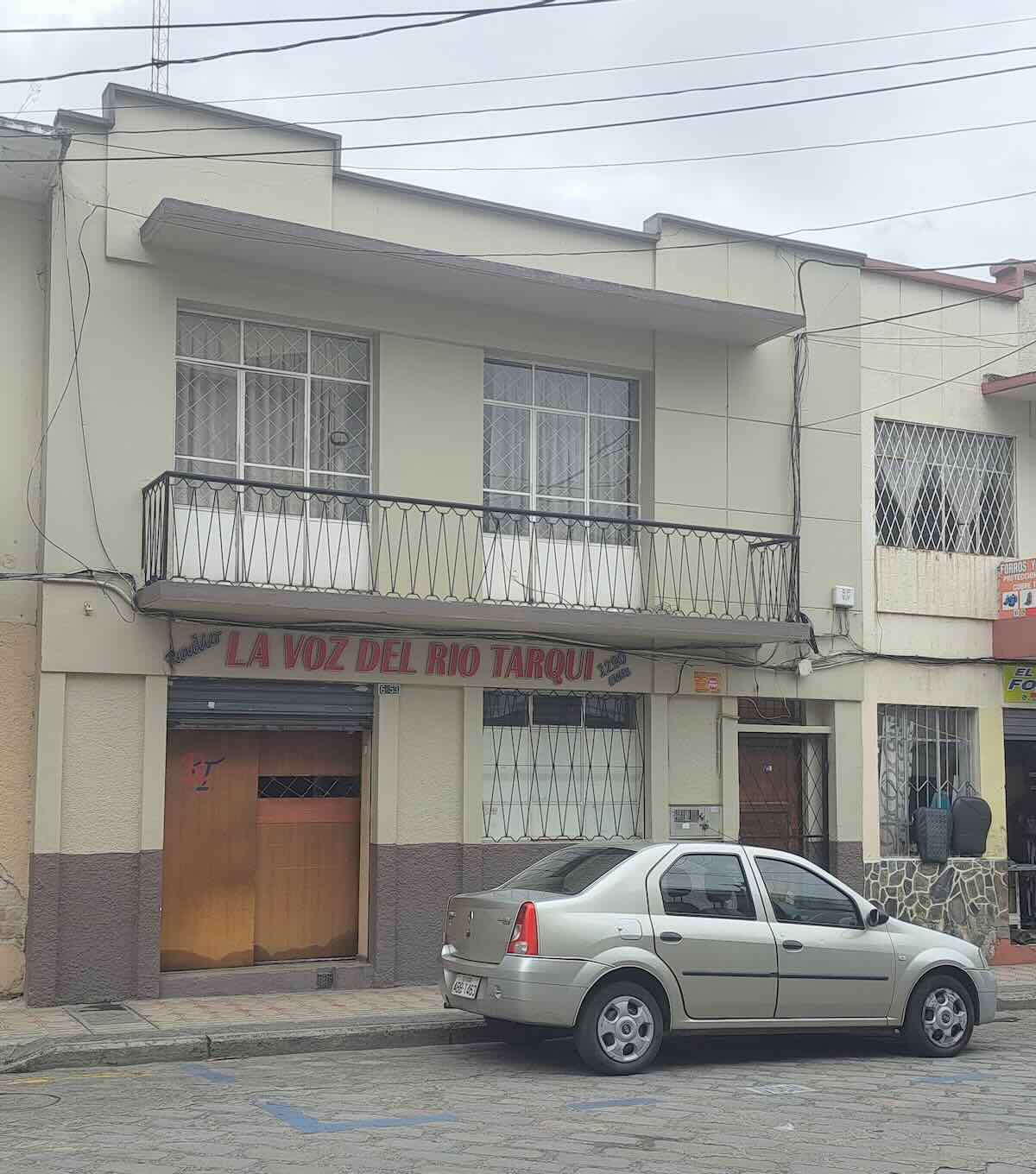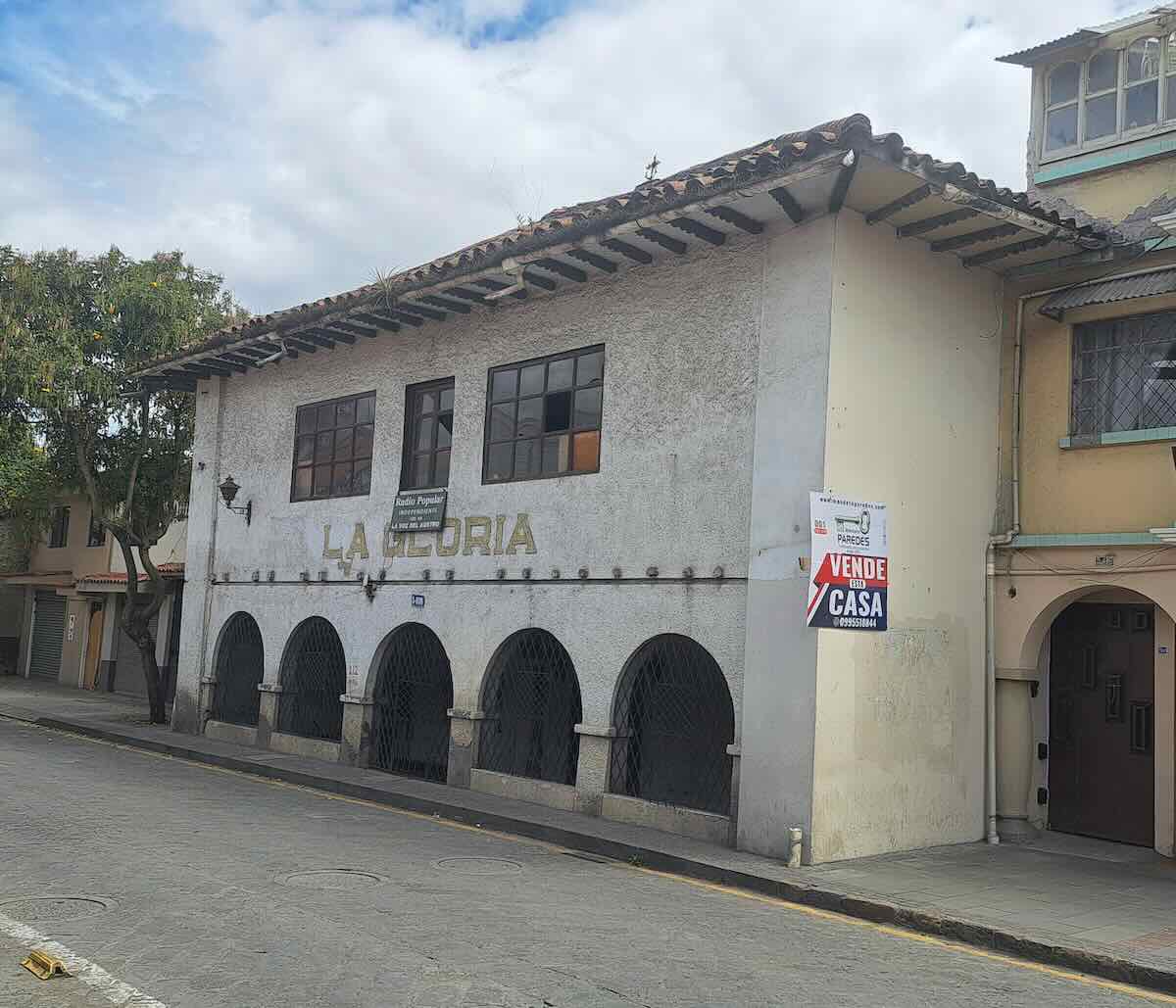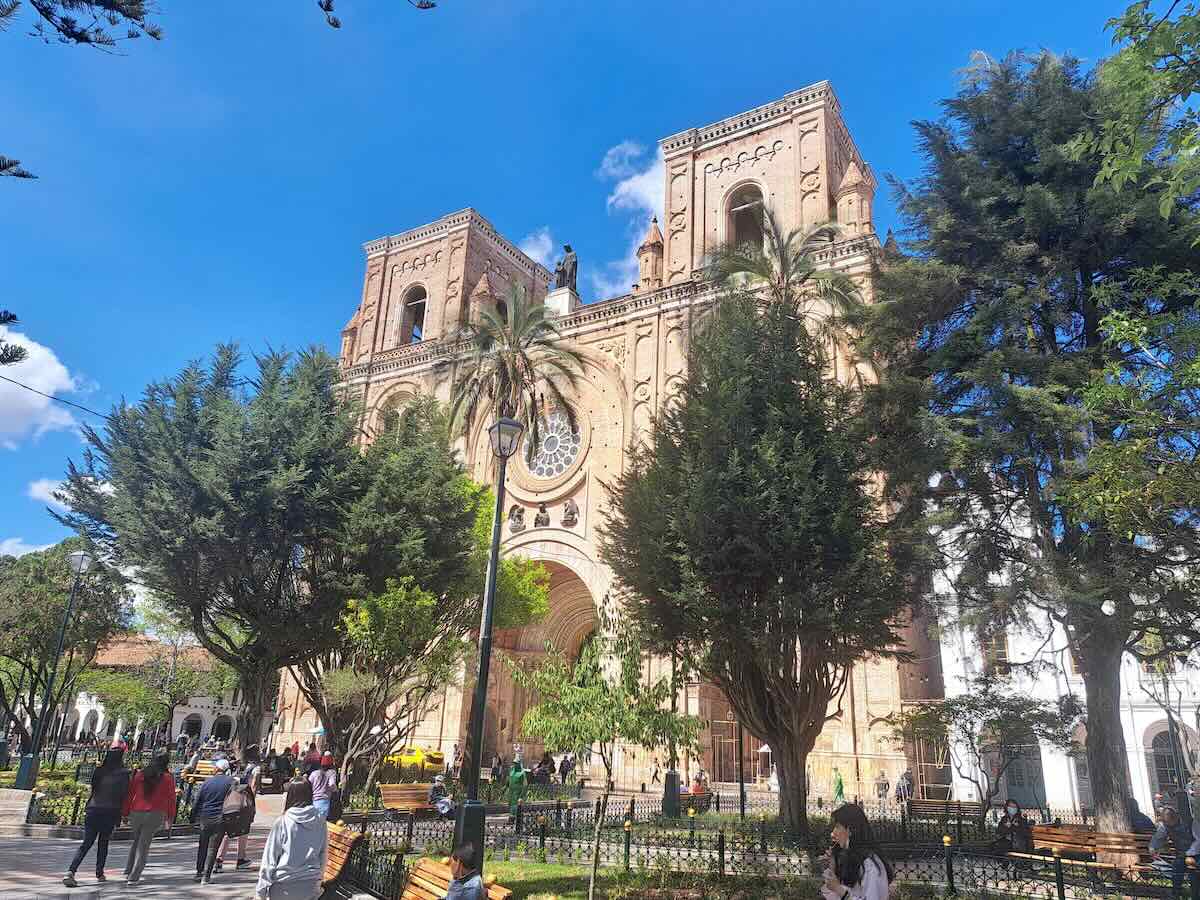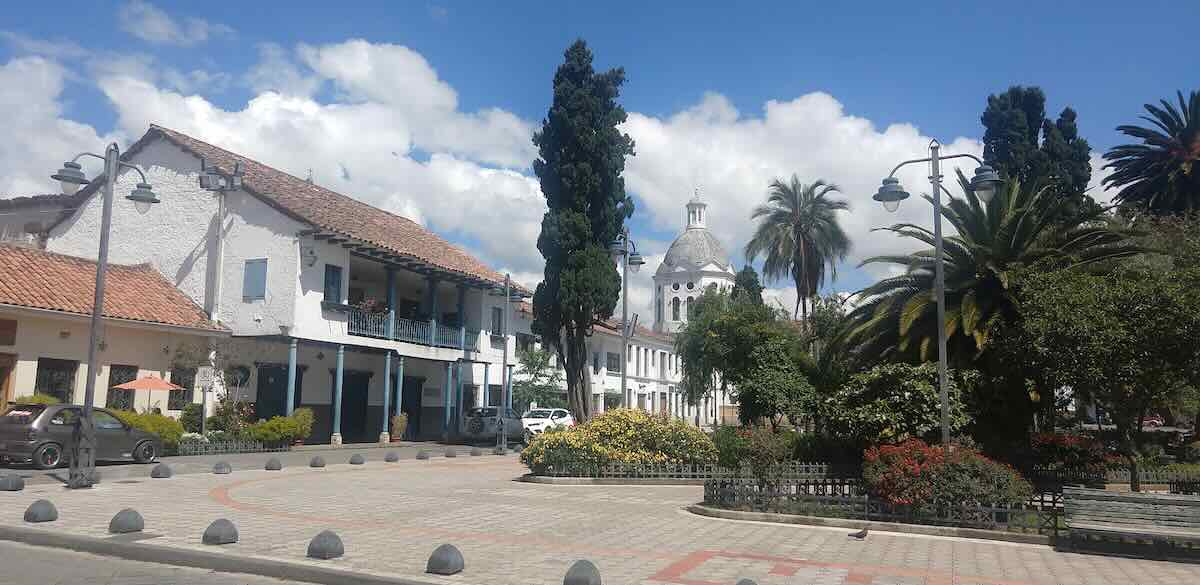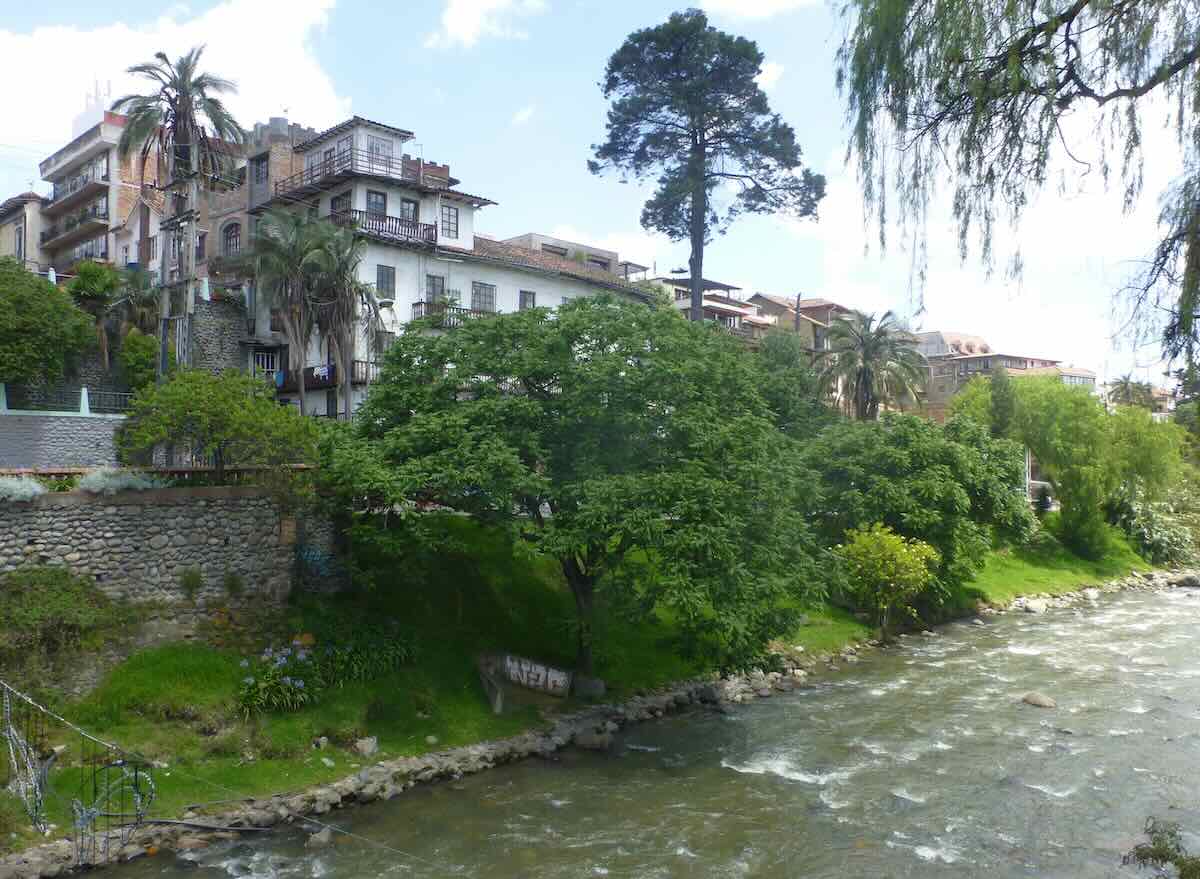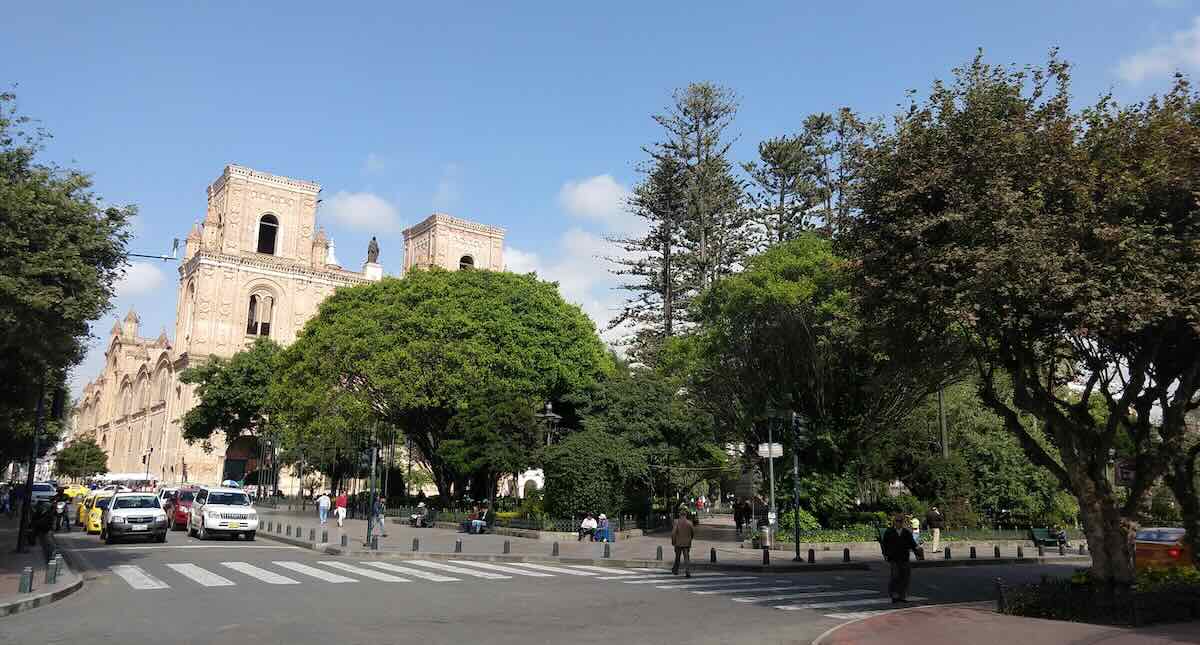Many thanks to SWLing Post contributor, Don Moore–noted author, traveler, and DXer–for the latest installment of his Photo Album guest post series:
Don Moore’s Photo Album: Cuenca, Ecuador (Part One)
by Don Moore
For me travel is all about seeing new places and having new experiences. When I retired in 2017 my plan was to spend the next fifteen years visiting new countries and new places in countries I already knew. Is that a viable goal? Three years ago while crossing the border from Ecuador to Colombia I shared a taxi with Dutch man who, like me, was traveling overland by bus with just a knapsack and a suitcase. And two weeks earlier he had celebrated his eightieth birthday. I don’t remember his name but he’s my hero.
The pandemic put a pause on travel but I’m happy to be back on the road. I’m currently in Ecuador, the country where I’ve spent more time than anywhere except the United States and Honduras. After landing in Quito at the beginning of December I visited four provinces I hadn’t been to before, including spending three nights at the bohemian beach town of Montañita where I had some good DX. I like seeing new places but there is also something to be said for returning to a familiar place that holds a special meaning. For me that place is where I am now – Cuenca, Ecuador.
My ex-wife and I finished our Peace Corps service in 1984, flew home to get married, and then in January 1985 flew to Quito, Ecuador to begin a long journey that would take us overland all the way to Buenos Aires and back. On our way to Peru in late February we stopped for a few days in Cuenca and fell in love with the little city. We visited Cuenca again in July at the end of our travels. When we left I knew we would be back but I never could have imagined the circumstances that would lead to that next visit. In 1997 we returned with our seven-year-old daughter to adopt a six-year-old son. We spent almost three weeks in Cuenca doing all the required paperwork but we had no complaints as we enjoyed being there so much. I clearly remember sitting in a park one day and commenting that Cuenca would be a perfect place to retire in someday. I was only ten years ahead of my time.
La Voz del Río Tarqui
Cuenca was home to several shortwave broadcasters over the decades but La Voz del Río Tarqui was probably the best known to my generation of DXers. The station was founded in 1960 by Manuel Pulla but didn’t begin its shortwave service on 3285 kHz until 1982. My loggings of the station run from July 1982 through 1997 but I believe they were on shortwave for a few more years after that. (Don’t confuse La Voz del Río Tarqui with Radio Tarqui, a sometimes broadcaster from Quito on 4970 kHz.)
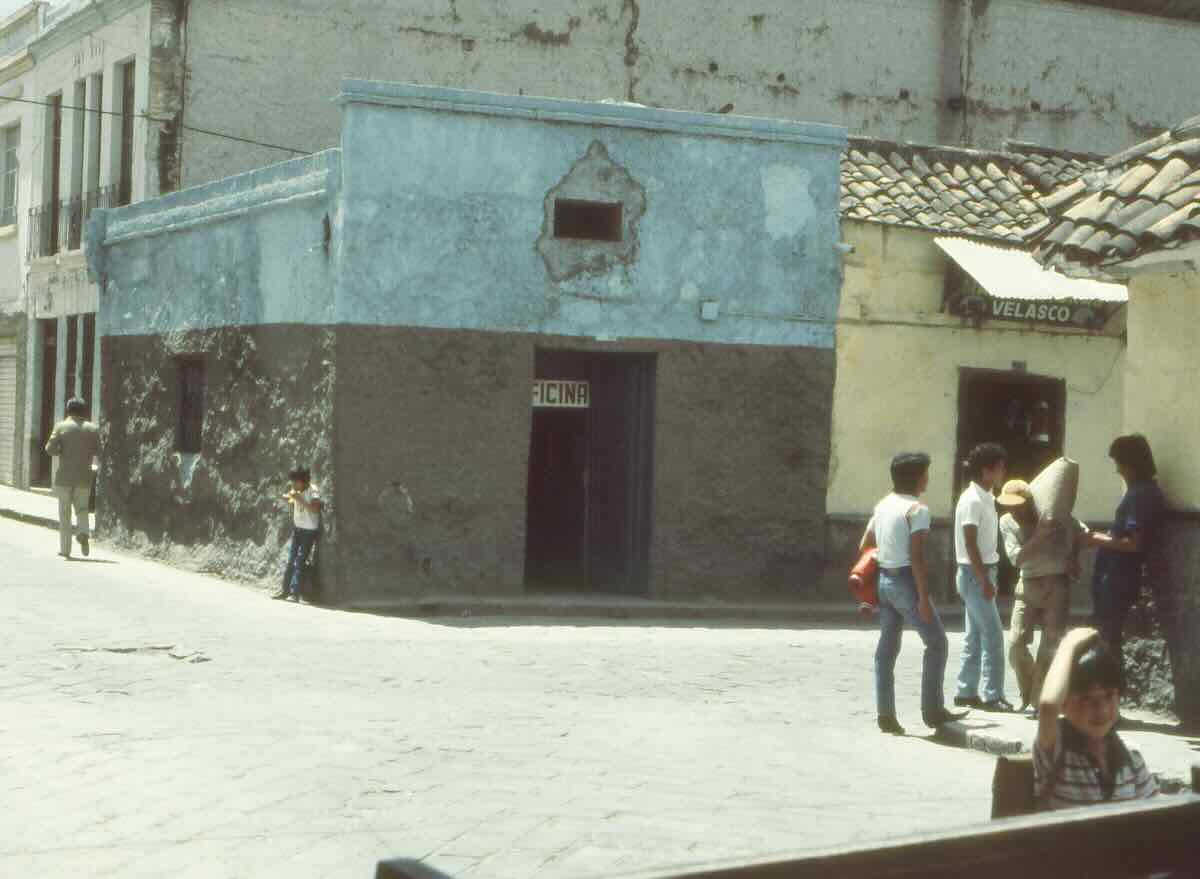
La Voz del Río Tarqui in 1985. The facilities inside were no more impressive than the outside of the building was.
La Voz del Río Tarqui takes its name from the famous Battle of the River Tarqui. After the new countries of South America gained their independence from Spain there was often disagreement over just where the boundaries were that they had inherited from Spanish rule. Ecuador was in a union with present-day Colombia and Venezuela until 1830 and during this time Peru claimed much of present-day southern Ecuador, including Cuenca and Guayaquil. In 1828 a large Peruvian army occupied Loja, to the south, and a few months later marched north to complete their conquest. In February 1829 General Antonio de Sucre, a hero of the war of independence, met the Peruvians on the banks of the Tarqui, twenty-five kilometers south of Cuenca. Both sides suffered heavy losses but Sucre’s army routed the Peruvians. Cuenca, Guayaquil, and Loja remained a part of Ecuador.
When I first visited La Voz del Río Tarqui in 1985 there wasn’t much to see. It was one of the simplest and most disorganized stations I visited in Ecuador. Station manager Alicia Pulla, daughter of Manuel, was clearly overworked and stressed out and didn’t need a gringo DXer stopping by to add something else to her day. Nevertheless she made the time to fill out QSL cards for me and for several DX friends I had brought reports for.
When I returned to Cuenca in 1997, La Voz del Río Tarqui was a much different station. The station had moved across town and had new offices and new studios. Everything was very organized and professional. Alicia Pulla remembered me from my earlier visit. She gave me a tour of the new location and recorded a very nice video greeting for me to show to DXers.
The Traveling Child
There are many things I love about Cuenca and at the top of the list is the Pase del Niño Viajero. Held every year on December 24th, this event started decades ago as a simple religious procession to commemorate the birth of Jesus. Over the years it evolved to become a joyous six-hour parade celebrating children and Ecuadorian culture. Bands play traditional music while colorfully dressed dancers twirl their way down the street. Many more people just dress up in either traditional clothing or costumes from the nativity to walk the parade route with family and friends. Some ride the parade route on elaborately decorated horses or maybe the family car or truck. Anyone can join in. I’ve been to Cuenca three times for the parade and I have every intention of seeing it several more times.
Click on the images in the gallery below to enlarge:
Radio Popular Independiente
Radio in Ecuador in the 1950s wasn’t just a man’s world. One of the most popular radio announcers in Cuenca was Señorita Manena Escandón at Ondas Azules. In 1955 Mario Villavicencio, a young man from the coast, showed up at the station’s doors looking for work. His audition went well and he got the job. And it wasn’t just the owner of Ondas Azules that Mario charmed. Fifteen days later he and Manena were married. A few months later, on January 27, 1956, the couple founded their own radio station – Radio Popular Independiente. The new station’s frequencies were 1230 kHz medium wave and 4800 kHz shortwave.
Mario and Manena became the most popular radio duo in Cuenca broadcasting history. Manena was more serious but Mario was a jokester and listeners nicknamed him el mono, the monkey. Older cuencanos still talk about a program the couple did together, Los Dos Pegaditos (‘Two Stuck Together’). They were known for playing two versions of the same song consecutively. Radio Popular Independiente was a for-profit station but in many ways it functioned as a community broadcaster by working closely with peasant unions, schools, and other civic organizations. For example, whenever the local hospital ran low on blood Mario or Manena would go on the air and ask listeners to make donations. The couple made Radio Popular Independiente one of the most important radio stations in southern Ecuador.
Everything changed in the early 1980s when Mario suddenly died years before his time. Not only had Mario been the face of the station but he had managed most of the business operations. The grieving widow couldn’t manage the same level of commitment and programming suffered. She moved the station from its downtown location to the second floor of the family home, about two kilometers away on Avenida Loja.
My first log of Radio Popular Independiente was in 1974. It wasn’t an easy catch because 4800 kHz was usually blocked by more powerful Radio Lara in Venezuela but Radio Popular often stayed on late, after the Venezuelan signed-off for the night. Sometime around 1980 Radio Lara left shortwave making Radio Popular easier to hear. But its weak signal was still a tough catch. World Radio TV Handbooks from the 1970s and 1980s don’t agree on the power, listing it everywhere from 200 watts to 5000 watts. I suspect the power was never more than one or two kilowatts.
I visited Radio Popular for the first time in 1985. It was a long time ago but what I most remember is Doña Manena telling me about her late husband’s work and how she wanted the station to continue because he had done so much to make it a success. She managed the station as best as she could but didn’t get involved in programming much except for daily readings of the rosary and leading prayers. Radio Popular had never been a good verifier and I got QSLs for myself and eight or nine DX friends. I believe I picked up verifications for more people there than at any other station I’ve visited.
I’m not sure when Radio Popular Independiente left shortwave. My last log for it was in 1990 and it was reported in NASWA through at least 1993, but the shortwave had been off for a few years when I visited again in 1997. Not much else had changed at the station. Everything looked the same as it had twelve years earlier. Doña Manena welcomed me and remembered me from my first visit. She seemed happier now, no longer the grieving widow. But she was running the station by herself. Some of her children had moved to the United States and the others had no interest in a career in broadcasting. She wondered what would become of the station she and her husband had founded four decades before.
Broadcasters for the People
During radio’s first few decades in Latin America, broadcasters aimed their programming at the region’s small upper and middle classes because they were the only people with receivers. That ownership model started to change in the early 1950s and then really sped up with the introduction of cheap transistor radios in the late 1950s. When rural peasants began buying radios that created a demand for programming that met their needs and appealed to their tastes. La Voz del Río Tarqui and Radio Popular Independiente were both founded in that era and were among the first such stations in Ecuador.
For both stations the core of their audience was never in the city of Cuenca but rather in the little villages in the surrounding mountains. Programming on La Voz del Río Tarqui and Radio Popular Independiente focused on the needs of the rural people and at the heart of that was broadcasting traditional music such as the pasillo and the pasacalle. The two stations did more than just place records on turntables. They promoted local musicians, often bringing them in to play live on the air. Musicologists in Ecuador credit the two stations as having had a major role in keeping traditional styles of music alive in southern Ecuador.
La Voz del Río Tarqui and Radio Popular Independiente were commercial broadcasters but neither made much money from advertising. One of the most important needs of the rural population was communication. There were no telephone lines in the countryside and few peasants could have afforded a telephone even if they had been available. La Voz del Río Tarqui and Radio Popular Independiente supported themselves by filling that gap in communication through the sale of anuncios. These were simply personal announcements that listeners paid the station to broadcast a few times. Anuncios could be anything: announcement of a birth, death, or engagement; birthday greetings; items to be bought or sold; the upcoming visit of the priest to a little village, etc. Sometimes a young man would pay the station a few centavos to play a particular song and dedicate it to that special someone. As a source of income it wasn’t a path to riches but it paid the bills and provided a needed service.
For decades telephones remained rare outside of cities and larger towns in much of Latin America. Running telephone lines to every little town and village, not to mention rural farms, was too expensive and few of the potential customers could have afforded the monthly bill. The business model at stations like La Voz del Río Tarqui and Radio Popular Independiente remained sound. But history has many examples of a new technology coming along and disrupting everything and for rural Latin American radio in the 1990s that technology was cellular telephones. Installing cell towers on hilltops is much cheaper than running wires everywhere. Soon inexpensive telephone service had arrived to hundreds of millions of people in the region. Until the mid-2000s some Latin American countries had higher percentages of cellphone ownership than the United States. *
The Two Stations Today
At La Voz del Río Tarqui the Pulla family saw how their business model was changing and they adapted by seriously pursuing commercial advertising and adjusting their programming to fit it. Today the third generation of Pullas run the station and it continues to command a loyal audience among the region’s rural peasants and the working-class people of Cuenca. La Voz del Río Tarqui continues to broadcast on its long-time AM frequency of 1290 kHz. Unlike many other stations in town they have never opened an FM outlet and it hasn’t seemed to have hurt them one bit.
At Radio Popular Independiente there was no younger generation to see coming changes and adapt to meet them. That may be because the younger generations of the family weren’t interested in radio but I suspect it’s also because Doña Manena wasn’t willing to share control with people from outside the family. Regardless, about eight or nine years ago I read that Radio Popular had turned-in its medium wave license for 1230 kHz and gone off the air. Probably no one wanted to buy the frequency in today’s FM-focused radio market. Doña Manena passed away in 2017 after a sixty-one-year career in Cuenca radio.
Curiously, Radio Popular Independiente still has an active online presence. There is a Facebook page that someone occasionally updates with memes but they have never answered my messages asking for more information. And there is an online radio stream that claims to be Radio Popular on 1230 kHz. I’ve listened up to two hours at a time and never heard and ID, advertisement, or announcement of any kind – just non-stop traditional Ecuadorian music.
A few days ago, on my way to somewhere else, I walked down Avenida Loja and once again came to Loja 2-408. Today the old house is empty and abandoned and there’s a for-sale sign on one side. At the other end of the building, the side I took my earlier pictures from, there’s a tall tree that wasn’t there in 1997. It’s been a long time since the last time I was here. The lady in the little store across the street probably wondered why a gray-haired gringo would stop and stare at the old place for so long.
In 1999 the historic center of Cuenca, north of the Tomebamba River, was declared a UNESCO World Heritage Site. The designation also includes one area south of the river, the long stretch of Avenida Loja that was once the main road coming into Cuenca from the south. The UNESCO designation had nothing to do with radio but I think it’s fitting that the old Radio Popular Independiente building is part of it. And the designation increases the likelihood that the old house will be repurposed and not razed.
In recent years the two ends of Avenida Loja have been revitalized as old structures were restored and became modern businesses and homes. The part in the middle, where Radio Popular Independiente was, is still very much as it was when I first walked down the street nearly four decades ago. But in the past few years one of Cuenca’s best Italian restaurants and one of the best coffee shops opened locations a block up the street. Change is coming and I hope whoever purchases the old Radio Popular Independiente building appreciates its history.
* Cell phone service in Latin America is excellent and cheap. I recently got a prepaid Ecuadorian SIM card from Claro, one of the top providers. Twelve dollars got me thirty days of service including twenty gigabytes of data. The service is great.
Links
Audio: La Voz del Río Tarqui as heard in Honduras in 1982. (local MP3)
Audio: Radio Popular Independiente via On The Shortwaves
As DXers we’re used to listening to audio recordings of DX stations. On my 1997 visit to Cuenca I went one step better and took along a camcorder. The following folder has videos of La Voz del Río Tarqui and Radio Popular Independiente that can be viewed in a browser or downloaded for later use. (The free VLC Player is my preferred app for viewing MKV videos.) In the La Voz del Río Tarqui video at 02:20 the announcer gives a station ID and then introduces the DXer visiting the station. At 05:05 Alicia Pulla gives a greeting to DXers everywhere. The Radio Popular Independiente video has station IDs at 00:20 and 05:20. Doña Manena greets DXers at 03:20 and the two announcers introduce themselves at 06:20.
Click here to download these videos via Google Drive.
- La Voz del Río Tarqui Website: https://www.lavozdelriotarqui.com/
- La Voz del Río Tarqui Facebook Page: https://www.facebook.com/1290RadioTarqui/
- Radio Popular Streaming: https://radios.com.ec/popular-1230/
- Radio Popular Facebook: https://www.facebook.com/popularcuenca/
- Samples of pasacalles: https://www.youtube.com/watch?v=ORLXNTqp7sw
- Samples of pasillos: https://www.youtube.com/watch?v=Jo0TQMr1EEc
YouTube video with selections from the 2022 Pase del Niño Viajero parade.

